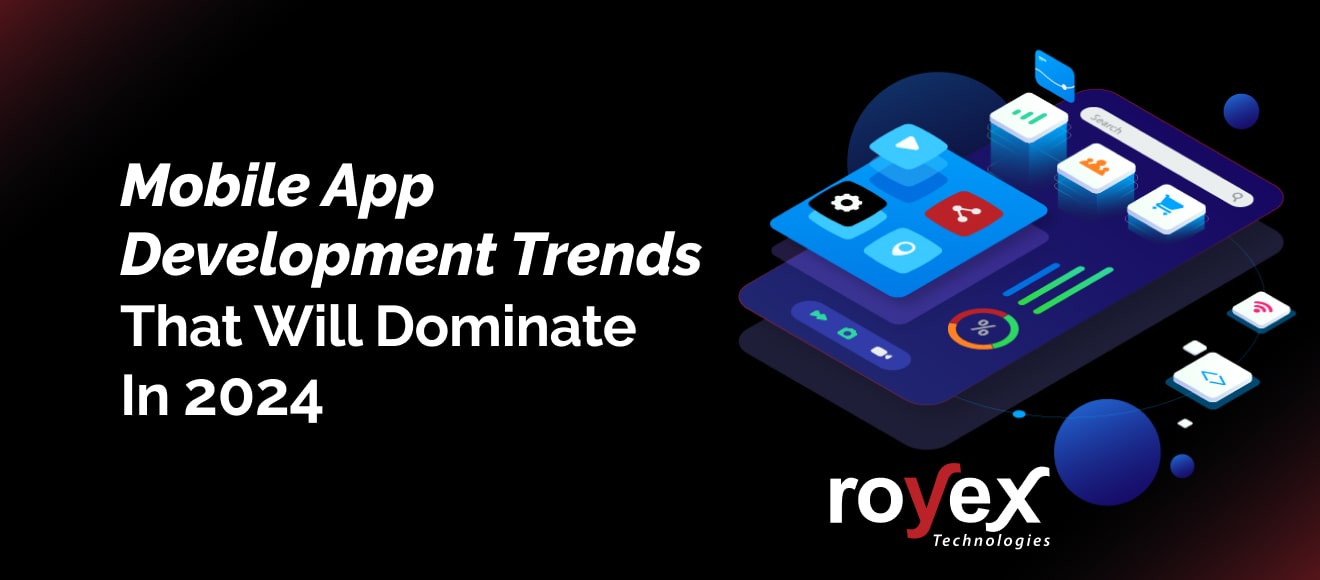
Mobile App Development Trends That Will Dominate In 2024
The ever-evolving mobile app development industry is constantly adapting to new trends and technologies. In the past decade, the mobile app industry has seen a huge surge in popularity and usage. With each passing year, the mobile app development industry is becoming more and more advanced, with new platforms, tools, and techniques emerging. Mobile apps have become an integral part of our lives over the past decade. From helping us stay organized to providing us with entertainment, they’ve revolutionized the way we interact with the world around us.
As technology advances, the mobile app development industry is also evolving, and there are some exciting trends that are likely to dominate the market in the coming years. Here are some of the mobile app development trends that are expected to dominate in 2024.
Current data, factual data, and real-life data
- It is projected that the mobile app development market will increase from $87.4 billion in 2023 to $167.9 billion by 2028.
- Artificial Intelligence and Machine Learning have already been incorporated into more than 60% of mobile apps.
- Augmented and Virtual Reality markets are predicted to rise from $27.8 billion in 2023 to $72.8 billion by 2028.
- Additionally, the Internet of Things market is projected to grow from $1 trillion in 2023 to $6.5 trillion by 2028, while the on-demand economy is predicted to expand from $35 billion in 2023 to $115 billion by 2028.
Augmented Reality
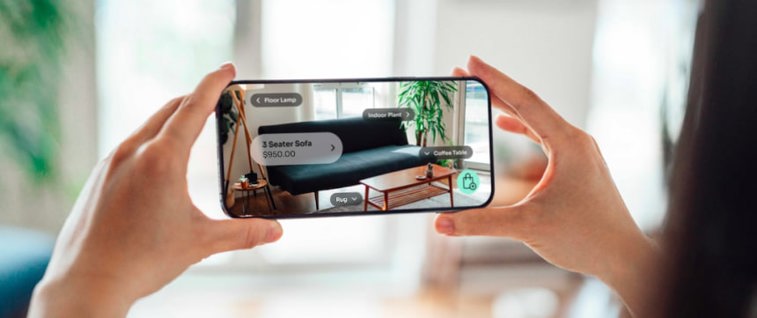
Augmented reality (AR) has made its way into the mobile app development world, and it’s likely to become even more popular as time goes on. By 2024, AR technology is expected to be widely used in mobile apps, allowing users to interact with digital content in a more immersive way. This could be used for gaming apps, educational apps, and many other types of applications.
Here are some real-world examples of AR in action:
Retail and E-Commerce
- IKEA Place: IKEA's AR app allows users to visualize how furniture will look in their homes before making a purchase. By leveraging AR, users can place virtual furniture in real-world spaces using their mobile devices, helping them make more informed buying decisions.
Gaming
- Pokémon GO: One of the most popular examples of Augmented Reality in Mobile App Development is the game, Pokemon Go. The game integrates augmented reality into the gameplay by allowing players to catch and battle Pokemon in the real world.
5G Integration

The rollout of 5G networks across the globe is set to revolutionize mobile app development. With faster speeds and lower latency, 5G will open up possibilities for more sophisticated applications, such as augmented reality (AR) and virtual reality (VR) experiences. Developers will need to adapt their strategies to leverage the full potential of 5G connectivity, ensuring seamless and immersive user experiences.
Here's how 5G integration will impact mobile app development, along with real-world examples:
Enhanced Speed and Performance
- Impact: 5G's faster download and upload speeds will lead to enhanced app performance, reducing loading times and providing smoother user experiences.
- Example: Video streaming apps, such as Netflix or YouTube, will benefit from reduced buffering times, enabling users to enjoy high-quality content without interruptions.
Optimized Mobile Advertising
- Impact: 5G will enable richer multimedia content in mobile advertising, leading to more engaging and interactive ad experiences.
- Example: Interactive AR advertisements within social media apps will provide users with immersive experiences, promoting higher user engagement.
Artificial Intelligence (AI) and Machine Learning (ML)
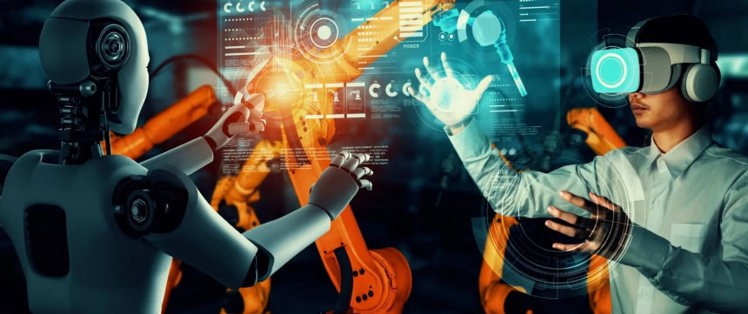
AI and ML continue to be at the forefront of technological advancements, and in 2024, their impact on mobile app development will be more pronounced. Intelligent chatbots, personalized user experiences, and predictive analytics will become integral features of mobile applications. Developers will increasingly harness the power of AI to automate tasks, enhance user engagement, and deliver more intuitive app interfaces.
Here's how AI and ML will impact mobile app development, along with real-world examples:
Personalized User Experiences
- Impact: AI and ML algorithms can analyze user behavior, preferences, and interactions to deliver highly personalized app experiences.
- Example: Music streaming apps like Spotify use ML algorithms to analyze listening habits and provide personalized playlists tailored to individual tastes.
Chatbots and Virtual Assistants
- Impact: AI-powered chatbots and virtual assistants enhance user engagement by providing instant support and information.
- Example: The mobile banking app for Bank of America incorporates Erica, an AI-powered virtual assistant, to help users with their financial queries.
Natural Language Processing (NLP)
- Impact: NLP technologies enable apps to understand and respond to natural language, enhancing communication and interaction.
- Example: Language learning apps like Duolingo use NLP to provide conversational practice, allowing users to interact with the app in a more natural way.
Facial Recognition and Biometrics
- Impact: AI-based facial recognition enhances security and user authentication features in mobile apps.
- Example: Mobile payment apps like Apple Pay use facial recognition as a secure authentication method for transactions.
Edge Computing

Edge computing is gaining momentum as a powerful solution to address the limitations of cloud-based processing. With edge computing, data processing is moved closer to the source, reducing latency and improving the overall performance of mobile applications. This trend will be particularly crucial for applications that require real-time data processing, such as gaming, healthcare, and IoT (Internet of Things) apps.
Here's how edge computing will impact mobile app development
Efficient IoT Device Management
- Impact: Edge computing is ideal for managing and processing data from Internet of Things (IoT) devices, improving efficiency and reducing the load on centralized servers.
- Example: Smart home applications can leverage edge computing to process data from connected devices locally, leading to faster response times for home automation.
Reduced Latency for Real-Time Applications
- Impact: Edge computing brings data processing closer to the source, reducing latency. This is crucial for real-time applications where instant responsiveness is essential.
- Example: Online multiplayer gaming apps can leverage edge computing to process game data locally, minimizing delays and providing a smoother gaming experience.
Blockchain Integration
Blockchain technology is transcending its association with cryptocurrencies and making its way into various industries, including mobile app development. In 2024, we can expect an increased focus on blockchain for secure and transparent transactions within applications. Decentralized applications (DApps) and blockchain-based authentication systems will become more prevalent, providing enhanced security and data integrity.
Here's how blockchain integration will impact mobile app development:
Enhanced Security and Privacy
- Impact: Blockchain technology enhances the security and privacy of mobile applications by providing a decentralized and tamper-resistant system.
- Example: Healthcare apps can use blockchain to secure patient records, ensuring data integrity and protecting sensitive medical information.
Transparent Transactions and Smart Contracts
- Impact: Blockchain facilitates transparent and secure transactions, and the use of smart contracts can automate processes within mobile applications.
- Example: Mobile payment apps can leverage blockchain for secure and transparent transactions, reducing fraud and ensuring reliable payment processes.
Supply Chain Traceability
- Impact: Blockchain integration in mobile apps enhances supply chain transparency by allowing users to trace the origin and journey of products.
- Example: Food delivery apps can utilize blockchain to track the source and handling of ingredients, ensuring quality and safety for consumers.
Extended Reality (XR)

Extended Reality, which encompasses VR, AR, and mixed reality (MR), is set to redefine how users interact with mobile applications. From immersive gaming experiences to practical applications in fields like education, healthcare, and retail, XR technologies will offer innovative and engaging user interfaces. Mobile app developers will need to adapt to the growing demand for XR experiences, creating apps that seamlessly integrate virtual elements into the real world.
Here's how extended reality will impact mobile app development:
Immersive User Experiences
- Impact: Extended Reality (XR), encompassing Virtual Reality (VR), Augmented Reality (AR), and Mixed Reality (MR), will enable more immersive and engaging user experiences in mobile applications.
- Example: Virtual Campus Tours: Educational apps can use XR to offer virtual campus tours, providing prospective students with a realistic and immersive preview of universities or schools.
Training and Simulation
- Impact: XR technologies will revolutionize training and simulation applications by offering realistic and interactive scenarios.
- Example: Virtual Employee Training: Corporate training apps can leverage XR to simulate real-world work scenarios, allowing employees to practice and refine their skills in a virtual environment.
Enhanced Gaming Experiences
- Impact: XR will transform mobile gaming by providing more immersive and interactive gameplay.
- Example: Immersive AR Gaming: Mobile games can integrate AR features to blend virtual elements with the real world, creating interactive and engaging gaming experiences similar to Pokémon GO.
Progressive Web Apps (PWAs)
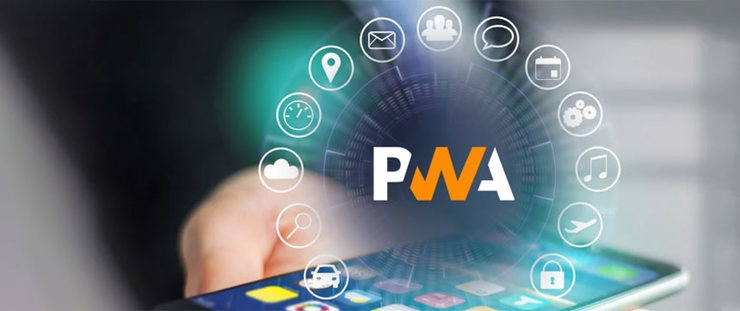
Progressive Web Apps continue to gain popularity as a cost-effective and user-friendly alternative to traditional mobile apps. In 2024, we can expect an increase in the adoption of PWAs, as they offer cross-platform compatibility, improved performance, and offline capabilities. This trend aligns with the growing need for lightweight and accessible applications that cater to a diverse range of devices.
Here's how PWAs will impact mobile app development:
Enhanced User Experience
- Impact: PWAs will continue to offer a seamless and engaging user experience with features such as fast loading times and smooth interactions.
- Example: Pinterest: Pinterest's PWA provides users with a responsive and visually appealing experience, ensuring quick access to images and content.
Cross-Platform Accessibility
- Impact: PWAs will remain cross-platform, reducing the development effort required for multiple operating systems and devices.
- Example: Uber: Uber's PWA allows users to book rides seamlessly across various devices, maintaining a consistent experience on both mobile and desktop.
Cost-Effective Development
- Impact: PWAs offer a cost-effective solution for mobile app development by eliminating the need for separate development for each platform.
- Example: Flipkart: Flipkart Lite, the PWA version of the e-commerce platform, provides a consistent shopping experience across devices, optimizing development costs.
Voice User Interface (VUI)
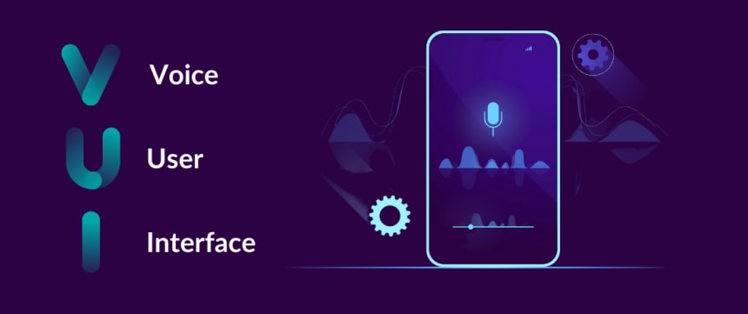
Voice interactions have become an integral part of our daily lives, thanks to virtual assistants like Siri and Alexa. In 2024, mobile app developers will increasingly focus on integrating Voice User Interfaces into their applications. From voice commands to natural language processing, VUI will enhance user accessibility and redefine the way users interact with their mobile devices.
Here's how VUI will impact mobile app development:
Enhanced Accessibility and Inclusivity
- Impact: VUI will play a crucial role in making mobile apps more accessible and inclusive by allowing users to interact with applications using their voice.
- Example: Google Assistant: Google's voice assistant provides a wide range of functionalities, from setting reminders to answering queries, making it an inclusive tool for users with diverse needs.
Multimodal Interfaces
- Impact: VUI will increasingly be part of multimodal interfaces, combining voice interactions with visual elements for a more comprehensive user experience.
- Example: Samsung Bixby: Samsung's Bixby offers a multimodal interface, allowing users to interact with their devices using both voice and touch commands for a versatile user experience.
Internet of Things
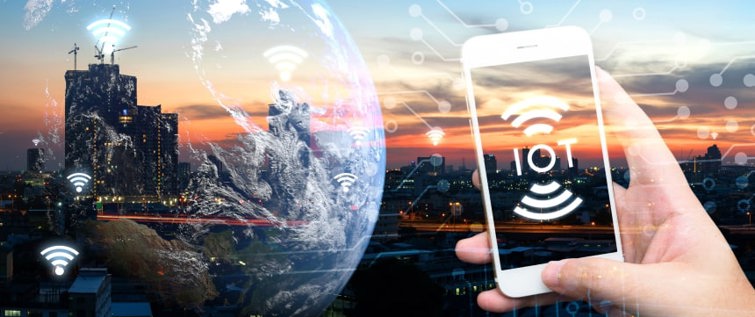
The Internet of Things (IoT) is becoming increasingly popular, and in 2024, we can expect to see a surge in the number of IoT-enabled apps. IoT-enabled apps enable users to control and monitor their devices remotely, as well as collect and analyze data. As IoT becomes more prevalent, many developers are expected to build apps that leverage the power of the IoT.
Here's how IoT will impact mobile app development:
Increased Device Integration
- Impact: IoT will lead to increased integration with various smart devices, requiring mobile apps to seamlessly communicate and control a diverse range of connected gadgets.
- Example: Smart Home Apps (e.g., Google Home, Apple HomeKit): Mobile apps associated with smart home ecosystems allow users to control lights, thermostats, security cameras, and other IoT devices from their smartphones.
IoT in Industrial Applications
- Impact: Mobile apps will increasingly cater to industrial IoT applications, providing tools for monitoring, controlling, and optimizing processes in various industries.
- Example: Manufacturing Plant Monitoring Apps: Apps associated with industrial IoT systems allow plant managers to monitor machinery, track production metrics, and receive real-time alerts for maintenance.
Wearable technology

Wearable technology is becoming increasingly popular, and in 2024, we can expect to see many more wearables-based apps. Wearable apps enable users to access their data and control their devices from their wrist, such as fitness trackers, smartwatches, and more. As a result, developers must be prepared to build apps that leverage the power of wearables.
Here's how IoT will impact mobile app development:
Gaming and Entertainment
- Impact: Wearables designed for gaming and entertainment will influence the development of mobile apps offering immersive experiences and cross-platform connectivity.
- Example: Oculus VR with Oculus App: Oculus VR headsets come with the Oculus app, allowing users to access a library of VR games and experiences directly from their wearable device.
Smartwatch App Ecosystem
- Impact: Wearable devices like smartwatches will lead to the expansion of dedicated app ecosystems, offering users a seamless experience across their wearable and mobile devices.
- Example: Samsung Galaxy Watch with Galaxy Store: The Galaxy Watch pairs with Samsung's Galaxy Store, providing users with access to a variety of apps directly from their wrist, enhancing convenience and accessibility
These are just a few of the mobile app development trends that are likely to dominate in 2024. As technology continues to advance, we can expect to see even more exciting developments in the mobile app industry, and developers must stay up-to-date on the latest trends in order to stay ahead of the competition.





